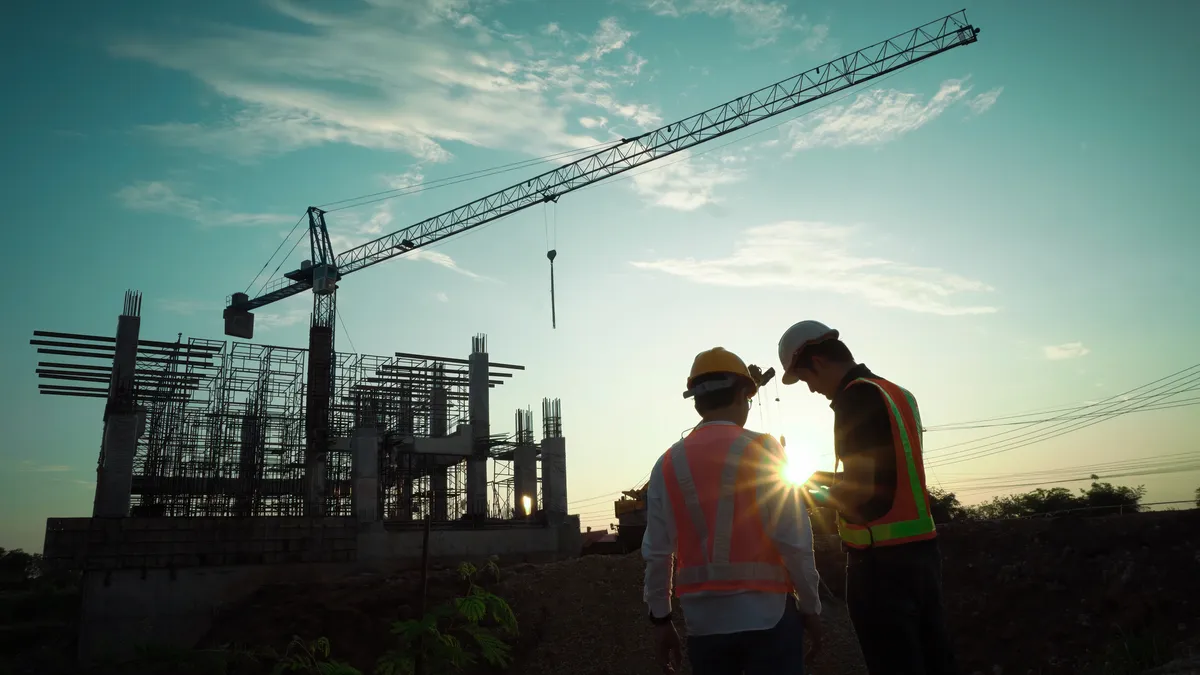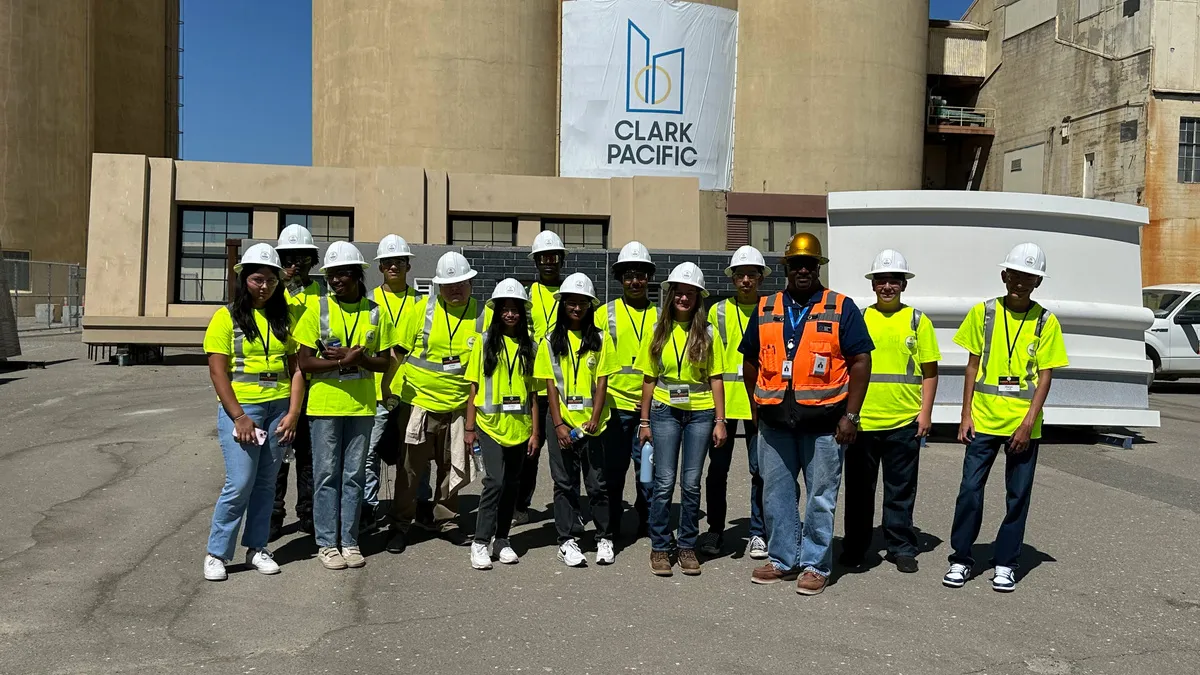This feature is a part of "The Dotted Line" series, which takes an in-depth look at the complex legal landscape of the construction industry. To view the entire series, click here.
The shortage of skilled labor has made it difficult for contractors to locate and keep a deep bench of quality workers, and there are no signs that relief is on the way. It stands to reason, then, since subcontractors provide so much of the labor on construction projects, that it has become trickier for many general contractors to find enough quality subs to meet the demand.
A survey sponsored by Autodesk and the Associated General Contractors of America found that 80% of contractors were having difficulty finding enough qualified craft workers.
This not only can put a great deal of pressure on project timelines but also can create a situation where contractors, both general and subs, are in danger of violating the clauses in their contracts that require them to provide enough labor to meet the schedule.
So, where are general contractors really feeling the pinch?
“We're putting people on the ground in those communities well before any procurement or any building occurs and we're getting to understand what that market has to offer."

Allen Troshinsky
VP operations, Mortenson
Availability changes depending on the market and type of construction. For example, Allen Troshinsky, Mortenson’s vice president of operations for the company’s sports and entertainment group, pointed to electrical, drywall and glass and glazing as some of the more difficult subs to line up.
Englewood Construction in Chicago specializes in national brand retail projects across the country and, according to Chuck Taylor, the company’s director of operations, the biggest subcontractor challenge has been nailing down excavation, site utility and flooring subs in all specialties like vinyl, ceramic, wood and carpet, as well as glass and glazing companies.
David Thomack, chief operating officer of Suffolk Construction’s Northern California division, told Construction Dive that finding electrical subs is a particular challenge in that busy geographic market, as are sheet metal and other metal works trades. Wood framing subs are also hard to come by in the San Francisco Bay area. “That’s another [trade] where there’s not a lot of capacity,” he said.
“It’s really tough right now,” said Thomack about the effort to find subs in the Northern California area. ”A blistering hot market, record unemployment, a lot of opportunities and options for [subs] — there are a lot of reasons.”
Building relationships
But these well-established general contractors have ways of finding subs, and it’s more about relationship-building than anything else.
For Mortenson, it’s all about planning and exploring the local market, doing its homework and identifying the subs with which the company would most like to work. This strategy starts up to a year in advance of deploying the project team, Troshinsky said.
“We're putting people on the ground in those communities well before any procurement or any building occurs,” he said. “And we're getting to understand what that market has to offer, what their resources are, what their labor availability is and the experiences and the capacities of the contractors that are there.”
This approach can also help elicit better numbers from subs.
“If a contractor, for lack of better words, could be intimidated by working with us because we're an unknown, they might want to ensure a little bit of protection with a contingency built into their pricing,” Troshinsky said. “But if they feel at ease with us, then they might be inclined to remove some of those risk contingencies. That all translates to more competitive pricing and more savings for our customers, so it's kind of a win-win all around.”
Mortenson has somewhat of an advantage over many other general contractors as far as the search for subs because it self-performs some work, including concrete and carpentry. However, in the last 10 to 15 years, he said, coinciding with the tightening labor market, the firm started to take on more civil work and some low-voltage electrical.
Thomack agreed that when a general contractor is relatively new to a market, it takes time for some subs to get comfortable with making the commitment and signing on to a project.
“Just like we are making calculated decisions on where we put our time and effort based on what the possible opportunities are,” he said, "the subcontractor community is doing the same.”
Englewood, said Taylor, has partners spread across the country — i.e. other general contractors and third-party services — that can help fill out any gaps in its subcontractor rosters.
Englewood, Mortenson and Suffolk all benefit from long-term relationships, though, that will see some of their existing subs positioned and ready to help or prepared to travel across the country with them, following the work.
These relationships, Troshinsky said, are also critical in attracting new subs as well as trade workers, because the companies that have worked with Mortenson can spread the word, perhaps making Mortenson more attractive to potential subs.
Verifying potential subs
Once candidate subs have been identified, Mortenson, like many general contractors, starts off with a request for a proposal along with a qualification package that each sub must complete. The information subs turn in is independently verified.
“[We ask] for information about their financial health, their safety performance, their record of quality workmanship, how they have succeeded in achieving or even surpassing goals set for community participation,” Troshinsky said. And, of course, pricing is a key factor in whether the sub will get the job.
Englewood’s initial qualifying forms are much the same and include a request for the sub's experience modification rate (EMR), a measure that workers’ compensation carriers use to establish insurance premiums but that are also indicative of a company’s safety record. Taylor said that there is some leeway in this category.
“For a subcontractor to have a higher EMR — while it’s not a best-case scenario, it’s plausible because they run into more risk,” he said. “If you’re working with tools and equipment, you’re going to have claims, and claims are what affects your EMR.”
For those subs that are relatively small or disadvantaged-, woman- and minority-owned businesses, it’s not uncommon for Mortenson to break those scopes of work into smaller packages in order to make the tasks more manageable.
That is the approach that Hampton Road Connector Partners (HRCP) is taking as it tries to meet the diversity and inclusion goals for the $3.9 billion Hampton Roads Bridge-Tunnel (HRBT) expansion project in Hampton Roads, Virginia. HRCP is part of a public-private partnership (P3) with the Virginia DOT and is soliciting the local construction community in its quest to sign up a greater number of small, disadvantaged and minority contractors.
That in-depth reconnaissance that Mortenson does prior to procurement, Troshinsky said, informs how the company will structure that work. However, even if a sub has some blips on its credit or some other less-than-desired response on a questionnaire, he added, it’s not necessarily a disqualifier.
One of the few situations that will likely eliminate the possibility of working with Englewood, Taylor said, is a lack of experience. For example, he said, that might include residential contractors that have never performed the type of specialty commercial work that makes up so much of Englewood’s business.
If a sub, Troshinsky said, is facing challenges — i.e. financial health, safety metrics, record of quality, workmanship — someone from the Mortenson project team might sit down with the contractor and try to help it formulate a plan forward. “That might include training or more supervision or identifying what's been the challenge over the last couple of years and making sure that they're not repeating that,” he said.
“There's always an opportunity to hear the contractor's side of the story. We would certainly want that opportunity if someone was ever considering automatically excluding us from something,” he said. “I think in fairness, we have the responsibility to meet with people and understand really what's going on and try to work with them.”
And having subs as partners can pay off through the entire project.
“Whether times are good or bad,” Taylor said, “we have to treat our subcontractors as partners whenever possible because, as a construction management company, subcontractors are the lifeblood of our projects and our revenues."
“The best projects that we have," Thomack said, “are the ones where the teams have formed really strong relationships.”
The Dotted Line series is brought to you by AIA Contract Documents®, a recognized leader in design and construction contracts. To learn more about their 200+ contracts, and to access free resources, visit their website here. AIA Contract Documents has no influence over Construction Dive's coverage within the articles, and content does not reflect the views or opinions of The American Institute of Architects, AIA Contract Documents or its employees.















